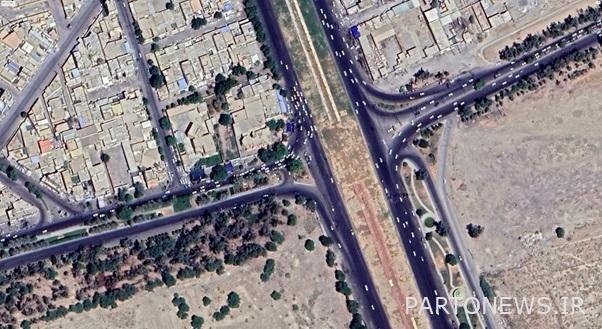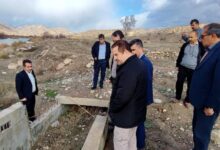A new discovery in Shush – Siri in Iran

While the parliamentary deputy of the Ministry of Cultural Heritage has recently spoken about the revision of the heritage area of Susa, archaeologists have discovered the remains of a metal smelting furnace, two Parthian coins and a bronze arrowhead in new excavations at a crossroads in the city of Susa. Speculation of archaeologists at the intersection of four roads in the city of Shush led to the discovery of traces including the integrated remains of a metal smelting furnace, which according to the results of excavations in 1396 and 1397 near this area, this metal smelting furnace can be dated to the end of the historical period or the beginning of The first centuries of Islam considered it to belong.
Mehdi Omidfar, the head of the Susa Archaeological Committee, said about this new find: Susa is one of the most important ancient sites in Southwest Asia, which is located in the north of the Khuzestan plain. This unique area is made up of several ridges, the most important parts of which are the Acropolis, Apadana, Shahr Shahi and Sanatgaran city limits.
This archaeologist reminded: Following the excavations of British and French archaeologists in Susa, the settlement of human societies in this area began in the second half of the fifth millennium BC and continued almost continuously until the middle Islamic centuries.
Omidfar continued: With the end of the presence of the French archaeological delegation and at the same time with the Islamic revolution in Iran, archaeological research in Susa faced a long break. After that, the limited excavations carried out by the Iranian delegations in the ancient site of Susa were more of a rescue nature, which includes the speculation at the crossroads of the entrance to the city of Susa in the eastern end of the city of artisans.
The head of the archeological board of Susa also said: One of the most challenging construction projects in the city of Susa in the past decade was the dismantling of the overpass bridge structure of the Ahvaz-Andimeshk transit axis in order to create an underpass. This bridge was one of the new structures in the area of the Shush area, and its dismantling made the conditions of this area compatible with the rules of the area and the privacy of the ancient enclosure by the custodian institutions.

Speculation of archaeologists at the crossroads of Susa, which led to the discovery of the remains of a metal melting furnace
He added: Based on the results of recent excavations and the rules governing the area of the ancient area of Shush, the possibility of building an underpass on the Ahvaz-Andimshek road (north-south axis) at the intersection of the crossroads entering the city of Shush, due to damaging the integrity and ancient nature of this There was no part of the area. Therefore, the project of constructing an underpass on the north-south axis of the Ahvaz-Andimeshk road was replaced by the city and provincial officials with a plan to create a structure on the Dezful-Shush axis (east to west), which will reduce traffic problems and organize this area from It will follow the city.
The head of Susa Archeology Board continued: With the suggestion of this alternative plan by the city officials to the Cultural Heritage and Tourism Research Institute, speculation was put on the agenda of the Archeology Board of Susa World Heritage Site to investigate the possibility of revealing cultural remains in the target area. The proposed area for the creation of an alternative structure at the intersection of the entrance to the city of Shush, in the northeast of Tepe Shahr Santagaran, is located in the first and second class sanctuaries of the world heritage site of Shush.
Omidfar said: This project, 380 meters from the western part of the proposed area, which includes the green belt at the entrance of Shush city, was subjected to archaeological speculation. Apart from exploring the unfavorable weather conditions of summer, the project faced other serious challenges, including dealing with thick water pipes for irrigation of green areas, water fountains, control boxes and electric cables, light poles and optical fiber cables. He pointed out that it is within the scope of speculation.
He added: The western part of this area was facing far fewer problems than the eastern part, whether it was dealing with urban infrastructure or other such obstacles.
This archaeologist said: In this season, a total of seven boreholes measuring 3 x 3 meters were created, and among the most important works obtained from them, we can mention the discovery of the integrated remains of a metal melting furnace in two excavation workshops.
The head of Susa Archeology Board stated: Although no significant cultural find was found in connection with this phenomenon that would make it possible to propose an exact date for it, but according to the results of excavations in 1396 and 1397 near this area, this metal melting furnace can be attributed to To the end of the historical era or the beginning of the first Islamic centuries.
Omidfar also said: This hypothesis is further supported by the discovery of 2 coins and a bronze arrowhead (in the lower layers of the metal melting furnace) from the Parthian period in other speculative workshops.

Some new findings in the last excavation of Susa
These new ancient finds have been obtained while Javad Vahedi – the parliamentary deputy of the Ministry of Cultural Heritage, Tourism and Handicrafts – has recently said: “The sanctuary and heritage areas of Susa need to be revised and the Minister of Cultural Heritage, Tourism and Handicrafts is also trying to solve the problems. This city emphasizes. Cultural heritage and tourism should not create problems and hardships for people and investors, some misunderstandings in the past have caused disturbances for people and investors in the field of cultural heritage and tourism.
The ancient site of Susa was about 1,200 hectares in size, but later proposals were made to limit it to 400 hectares, which led to widespread opposition from archaeologists. At the end of 2014, Farhad Nazari – Director General of Historical Monuments Registration – announced that the arena and Harim of the historical city of Susa have been notified considering 700 hectares. Now, after about eight years of shrinking the boundaries of the ancient site of Susa, the guardians of the cultural heritage have again proposed the reformation of the boundaries of this ancient area, which is about seven thousand years old.


